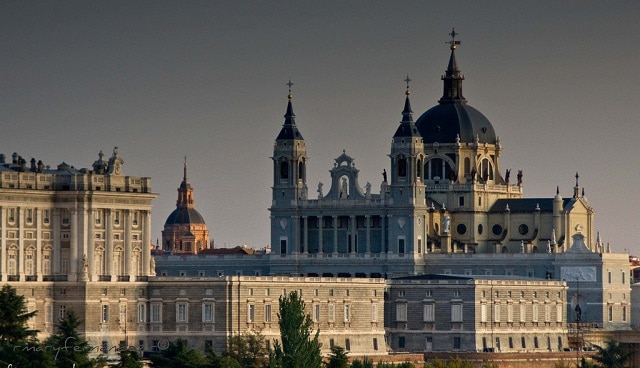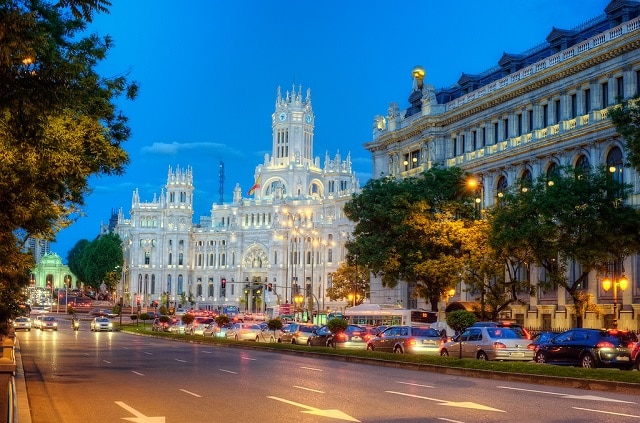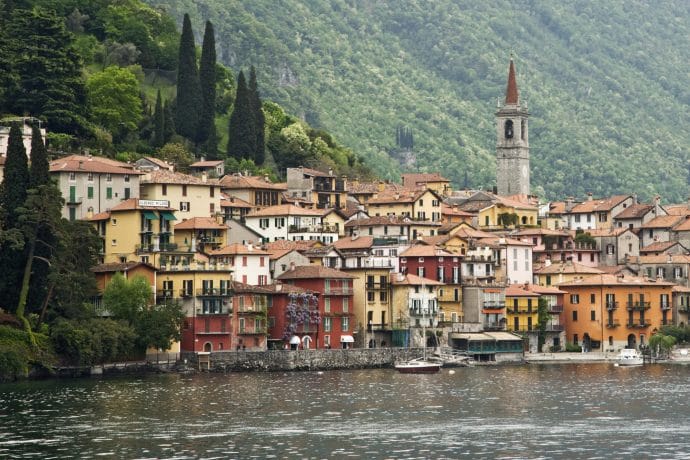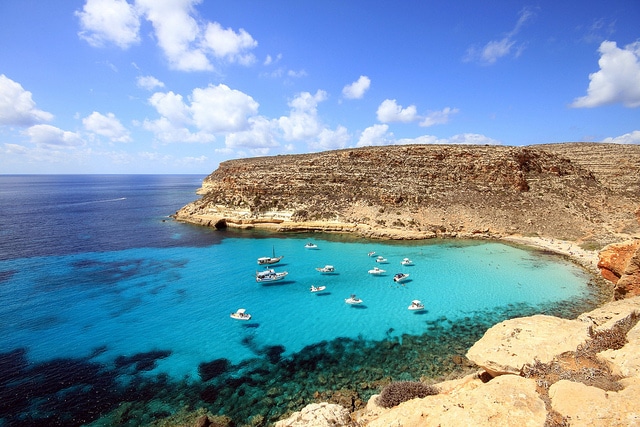The city of Madrid is located in the center of Spain. Known for its many cultural landmarks and its boisterous nightlife, the city is the ideal destination for a quick city break.
What to do?
Explore the Prado and Reina Sofia Museums, walk along the leafy boulevards of the Retiro Park before renting a rowing boat and visit the Royal Palace. Tour the Santiago Bernabeu stadium and enjoy views towards the center from a cable car. If the hustle and bustle of the city is too much for you, take a short train ride to one of the neighbouring towns. In the town of El Escorial you will find an ancient monastery, and in the city of Segovia, known for its Ancient Roman aqueduct, you will be able to taste succulent suckling pig.

How to get there?
The easiest way to get to Madrid is by plane, and there are many cheap flights to Madrid from all over the world. Buses, cars and trains are other means of getting into this city. The high speed AVE trains connect the city to Barcelona, Malaga and Seville, three cities worth visiting.
Where to stay?
The most comfortable option is to stay at one of the apartments, hostels and hotels located close to the city center. In this way, you can explore the city on foot and not have to worry about getting around the city using public transport. Many of the houses located in the historical city center, in the area near the Puerta de Sol and Plaza Mayor, have been transformed into hostels for those on a budget. Some of the larger, more impressive buildings with views towards the Gran Vía main street are now grand hotels. If you prefer to stay outside of the city center, buy a ten ticket metro pass and use the city’s efficient public transit system.
What to eat?
Madrid is a city where gastronomy is part of the local culture. Lunch and dinner are later than in other parts of the world, and the local dishes are worth the wait. Here is a short list of the dishes you must order in order to taste the city:
Huevos rotos con jamón: fried eggs with fries and cured ham.
- Esparragos trigueros: fried green asparagus served with thick salt.
- Gazpacho: technically from the south of Spain, this cold vegetable soup is ideal for a summer day.
- Tortilla de patatas and croquetas: the most traditional dishes in the city, the ones everyone will claim their mother can do better. The first one is a thick potato and caramelized onion omelet, and the second one are deep fried croquettes stuffed with bechamel sauce and ham.
Where to drink?
Madrid’s nightlife is legendary. There are many bars, clubs and discos for all ages. Most of the are located around the city center, such as the indie chic hip Malasaña, filled with trendy lounges and gay bars steps away from the Gran Vía. South of the center is the multicultural Lavapiés, the place for some international dishes accompanied by a shisha.
Are you looking for a quiet night out? Head to any of the local terrazas for a caña beer accompanied by some olives. We recommend the terrazas sprawled around the Retiro park and those located in the chic Barrio Salamanca district, north of the city center. Near the Prado Museum there are several boulevards known for their bars serving tinto de verano wine accompanied by jamón.
Are you looking for party? Head to the Plaza de Santa Ana for a quiet drink on a terrace, and the walk towards the neighbouring Huertas district, filled with bars, karaoke bars, clubs and discos. If you want do as the locals do, have a late tapas dinner in the La Latina district, located steps away from the city center, and then stay for a drink (or two or three) in one of the many, many bars in this area.
Madrid photos: Marc, Rosa Fernandez.















